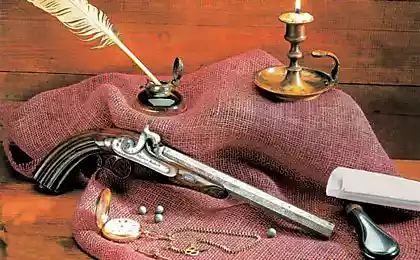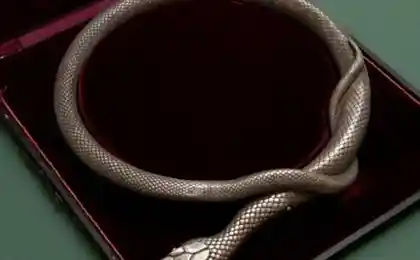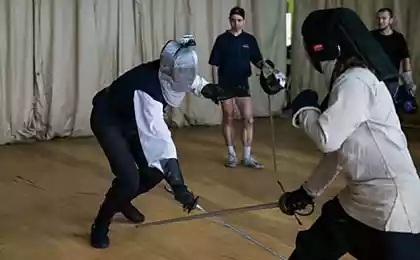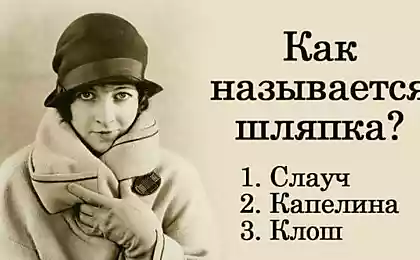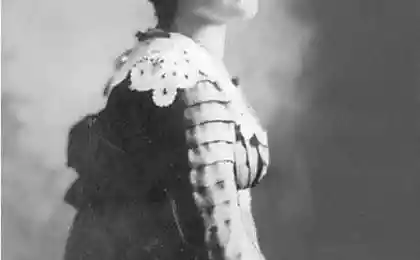928
Sword

The sword was "born" in Spain in the 60s of the XV century, originally representing a light sword, equipped with sophisticated decorative Garden. While swords because of the large weight is not well suited for everyday wear, many nobles were in peacetime or ceremonial swords lightweight type, which served as the prototype of the first shapgi. Tellingly, the sword was not originally perceived as a separate type of weapon, and because in many European languages wore and is called "sword" - App. espada, Italian. spada, fr. epee, Eng. sword, and only in the German language was his own, separate, the name - it. Degen. Despite the apparent decorative effect this weapon, in case of danger for the effective enforcement and attack and in the absence of armor and shield, in connection with what has become widespread.
Subsequently, under the influence of the French school of fencing, sword became shorter, and then lost the blade turned into faceted blade is noticeably inferior length as early swords and Konchar - similar to a sword blade faceted whose length allows Cavalier finish fallen to the ground of the enemy. At the same time, in some countries, new sword, losing in length, have kept one or even both blades.
During the XVI-XVIII centuries fighting swords were armed troops, mainly from the troopers and officers, gradually wiping out sabers and swords.
The sword was a recognized hallmark of a nobleman. Deprivation of a title of nobility accompanied by t. N. "Civil penalty" - broken sword in the presence of witnesses (usually on Calvary, when crowds and after the verdict, sometimes - sentenced over his head).
The main feature is the presence of a complex sword guard, protecting the hand well, this is the guard allows risk-free protection for your fingers to use, based on the short concise movements
Sport sword - stabbing weapon consists of a flexible steel blade, protective guard and handle. Blade trihedral cross section (the maximum width of sides 24 mm) to top thinning, which has a tip with a movable electrical contact device. Total length of the sword does not exceed 115 cm (blade does not exceed 95 cm) diameter guard 135 mm, weight 750 grams to the sword.
Fencing as a sport was included in the program of the first modern Olympic Games in 1896.
In the XIX century Italian fencing masters and aristocrat Visconti, who lived in Belgium, has invented a new type of handle, called "pistol" or "Belgian" handle, which covers the entire brush. In Fencing she recognized unfair and prohibited.
In 1708 Peter the armed infantry swords all. In 1741, at the rank and file of infantry straight sword was replaced polusabli. Swords were left only to officers of all arms, and for a while Guards Musketeers.
Since the XIX century (until 1917) was a sword belonging uniforms of generals and officers Cuirassier regiments outside the system, as well as the dress uniform civil officials.
The right to bear a sword was a privilege. Students are often given the right to wear a sword after graduation. Of all the universities in Russia only in the Moscow University student was given the right to carry a sword already at enrollment.
Now the sword is preserved as part of the dress uniform of higher diplomatic officials in individual countries.
